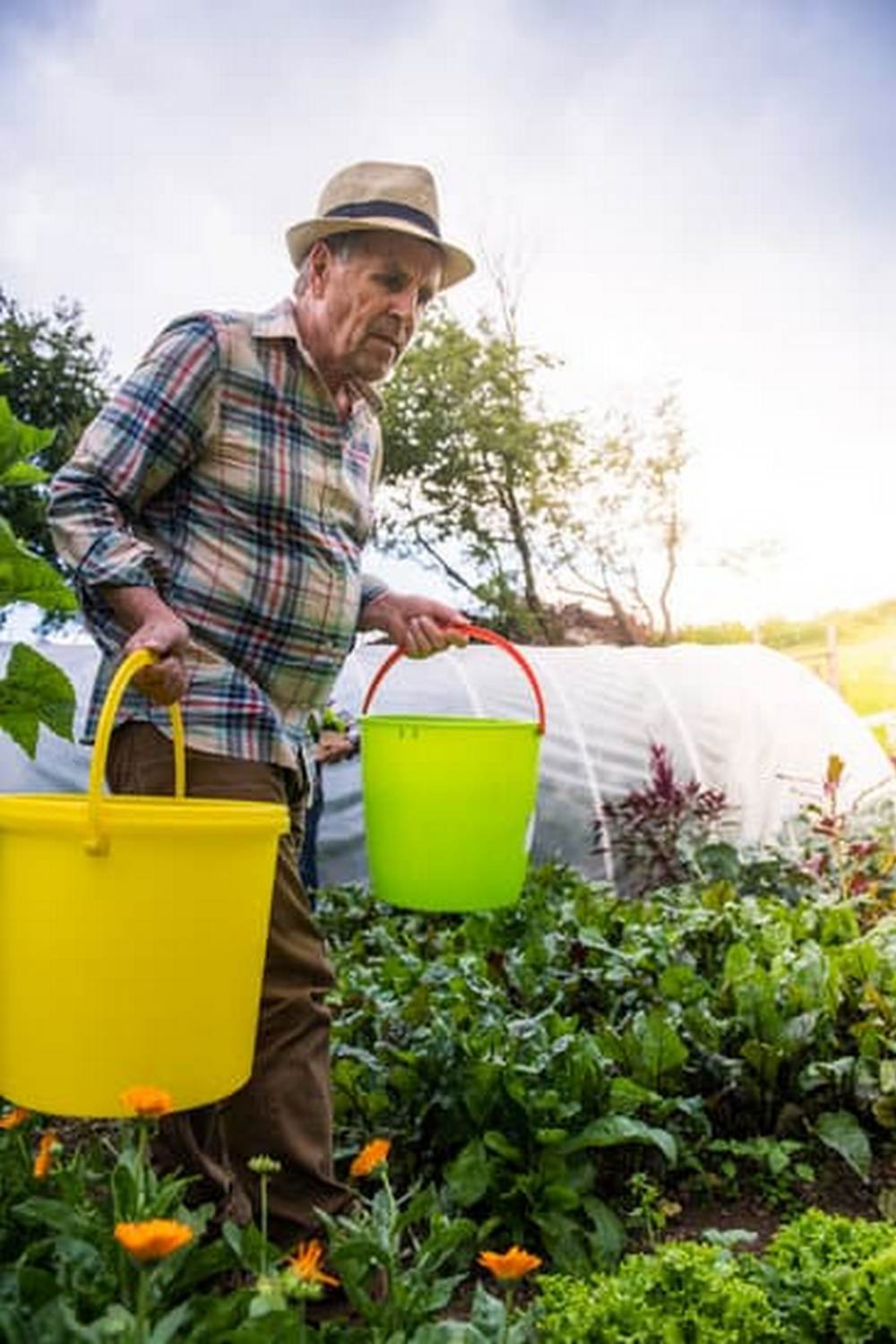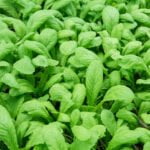A cottage vegetable garden is a charming and practical addition to country living, providing an opportunity for sustainable and self-sufficient living. These small-scale gardens not only provide fresh produce but also contribute to the overall aesthetics of the countryside. In this article, we will explore the significance of cottage vegetable gardens in a country setting, along with tips and tricks for planning, planting, and maintaining your own fruitful garden.
The quaint appeal of a cottage vegetable garden in the countryside adds to its allure and importance. It is not only a source of fresh, organic produce but also reflects a simpler way of living that is in harmony with nature. With careful planning and maintenance, these gardens can thrive in the rural landscape, contributing to a more wholesome lifestyle.
Cottage vegetable gardens are also essential for promoting sustainability and self-sufficiency in country living. With the rising awareness of food sources and environmental impact, these gardens play a crucial role not only in providing nutritious food but also in reducing the carbon footprint by growing locally sourced vegetables. As we delve into this topic further, you will discover how to integrate a cottage vegetable garden into your country lifestyle effectively.
Planning Your Cottage Vegetable Garden
A Cottage Vegetable Garden is a charming and practical addition to any country setting. It not only provides fresh and healthy produce for your family but also adds aesthetic value to your property. Planning your cottage vegetable garden is crucial to maximizing space, ensuring optimal plant growth, and creating an organized and beautiful outdoor space. Here are some tips and tricks for designing and organizing your garden space:
- Assess your available space: Before you start planning, take a look at the available area for your garden. Consider factors such as sunlight exposure, proximity to water source, and any existing landscape features that may impact your garden layout.
- Design a functional layout: Create a rough sketch of how you want to arrange your vegetable beds, pathways, and other elements in the garden. Consider using raised beds or containers for easy maintenance and efficient use of space.
- Make use of vertical space: In a cottage vegetable garden, vertical gardening can be a great space-saving technique. Install trellises or arbors for climbing plants like beans, cucumbers, or tomatoes.
When planning your cottage vegetable garden, it’s important to consider not only the aesthetics but also the functionality and practicality of the design. By following these tips and tricks, you can create a well-organized and beautiful garden space that will provide bountiful harvests throughout the season.
Ultimately, the goal of planning your cottage vegetable garden is to create a space that is not only visually appealing but also highly productive. With careful consideration of design elements, efficient use of available space, and attention to practical details, you can create a cottage vegetable garden that enhances the country living experience while providing an abundant supply of fresh produce for you and your family.
Choosing the Right Vegetables
When it comes to choosing vegetables for your cottage vegetable garden in the country, it’s essential to consider the climate and soil conditions of your specific location. By selecting the right vegetables that are well-suited to your environment, you can ensure a successful and bountiful harvest. Here are some tips for choosing the best vegetables for your cottage garden based on climate and soil conditions:
- Consider the climate: Before selecting which vegetables to grow in your cottage garden, take into account the climate of your area. Some vegetables thrive in cooler temperatures, while others prefer warmer weather. Research which vegetables are best suited to your specific climate and growing season.
- Soil type: The type of soil in your cottage garden will also play a significant role in determining which vegetables will grow best. Some vegetables, such as tomatoes and peppers, prefer well-draining, loamy soil, while others like carrots and potatoes thrive in sandy or clay soil. Conduct a soil test to determine the pH level and nutrient content of your soil to ensure you choose vegetables that will flourish.
- Disease resistance: When selecting vegetables for your cottage vegetable garden, it’s essential to choose varieties that are resistant to common diseases prevalent in your area. This will help prevent widespread damage and reduce the need for chemical treatments.
By considering these factors when choosing which vegetables to plant in your cottage garden, you can set yourself up for a successful and productive growing season. By selecting varieties that are well-suited to your climate and soil conditions, you’ll be on your way to enjoying a diverse array of fresh, homegrown produce straight from your country garden.
Having an understanding of how different vegetable varieties fare in various climates will help you make informed choices about what to plant in order for them to flourish effectively within their environment. This is essential knowledge when seeking optimal results from a country-based vegetable garden.
Preparing the Soil
When it comes to creating a successful cottage vegetable garden in the countryside, one of the most important steps is preparing the soil. The quality of your soil directly impacts the health and yield of your vegetables, so taking the time to properly prepare and enrich it is crucial.
Soil Testing
Before you begin any soil preparation, it’s essential to test the pH and nutrient levels of your soil. This will help you determine what amendments are needed to optimize the soil for vegetable growth. Many local agricultural extension offices offer soil testing services, or you can purchase DIY test kits from gardening centers.
Improving Soil Structure
In many country settings, the soil may be heavy clay or sandy, which can create challenges for vegetable gardening. Adding organic matter such as compost, aged manure, or shredded leaves can improve the structure of the soil by increasing its ability to retain moisture and nutrients while also improving drainage.
Adding Nutrients
Once you have a good understanding of your soil’s nutrient levels from your tests, you can add specific fertilizers or organic materials to address any deficiencies. This could include adding nitrogen for leafy greens, phosphorus for root development, and potassium for overall plant health.
By focusing on proper soil preparation and enrichment before planting your cottage vegetable garden in the country, you are setting yourself up for a successful and bountiful harvest. Taking these steps to improve your soil ensures that your vegetables will have access to all the nutrients they need to thrive throughout the growing season.
Planting and Maintenance
Planting Your Cottage Vegetable Garden
When it comes to planting your cottage vegetable garden in the country, it’s essential to consider the layout and spacing of your vegetables. Start by creating rows or raised beds for each type of vegetable you plan to grow.
This will not only make maintenance easier but also ensure that each plant receives adequate sunlight and nutrients from the soil. Be sure to follow the guidelines for spacing provided on seed packets or plant tags to avoid overcrowding and competition for resources.
Watering Your Garden
Proper watering is crucial for the success of your cottage vegetable garden. In a country setting, where access to water may be limited, it’s important to develop a watering schedule based on the needs of your plants and the climate in your area. Consider investing in a drip irrigation system or soaker hoses to efficiently deliver water directly to the root zones of your plants, reducing water waste and promoting healthy growth.
Maintaining Your Garden Throughout the Season
Regular maintenance is key to ensuring a bountiful harvest from your cottage vegetable garden in the country. This includes tasks such as weeding, mulching, and monitoring for pests and diseases. Stay on top of any issues that arise, and address them promptly using organic methods whenever possible. Additionally, be sure to provide support for vining crops such as tomatoes and cucumbers as they grow, preventing damage from heavy fruits and improving air circulation within the plants.
By following these steps for planting and maintenance, you can enjoy a thriving cottage vegetable garden that provides fresh produce throughout the season while embracing a sustainable country lifestyle.
Pest and Disease Management
Creating and maintaining a cottage vegetable garden in the country can be a rewarding and productive endeavor. However, with the benefits of growing your own fresh produce come the challenges of managing pests and diseases that can potentially harm your plants. Fortunately, there are effective methods for controlling pests and diseases in your vegetable garden without resorting to harmful chemicals that can be detrimental to the environment and your health.
One of the most important strategies for pest and disease management in a cottage vegetable garden is practicing good cultivation techniques. This includes proper spacing between plants, regular weeding, and maintaining healthy soil through organic fertilization. By promoting strong plant growth, you can increase their natural resistance to pests and diseases.
Another essential aspect of pest and disease management is crop rotation. This method involves planting different types of vegetables in specific areas each year to prevent the buildup of pests and diseases that target certain plant species. Additionally, intercropping – planting different types of vegetables together – can help deter pests by making it difficult for them to locate their preferred host plants.
Furthermore, incorporating natural predators into your cottage vegetable garden can also aid in pest control. Ladybugs, lacewings, and parasitic wasps are just a few examples of beneficial insects that feed on common garden pests such as aphids, caterpillars, and mites. You can attract these helpful predators by planting flowers such as marigolds or allowing some areas of your garden to grow wild to provide habitat for them.
| Pest/Disease Management Method | Description |
|---|---|
| Crop Rotation | Planting different types of vegetables in specific areas each year. |
| Intercropping | Planting different types of vegetables together to deter pests. |
| Natural Predators | Incorporating beneficial insects into the garden for pest control. |
Harvesting and Preserving
Harvesting your vegetables from your cottage vegetable garden can be an incredibly satisfying experience. Not only do you get to enjoy the literal fruits of your labor, but you also get to savor the taste of fresh, homegrown produce.
When it comes to harvesting, it’s important to pick your vegetables at the right time to ensure optimal flavor and texture. For example, tomatoes should be picked when they are fully ripe and have a deep color, while leafy greens like lettuce and spinach should be harvested before they start to flower.
Once you’ve harvested your vegetables, it’s essential to employ proper preservation methods to make the most of your bountiful harvest. There are various methods for preserving vegetables such as canning, freezing, pickling, and drying. The method you choose will depend on the type of vegetable you’re dealing with and how you plan to use them in the future.
For example, if you have an abundance of tomatoes, canning them into sauce or salsa can be a great way to enjoy them throughout the year. On the other hand, leafy greens like kale or Swiss chard can be easily frozen for later use in soups or stir-fries.
Preserving the vegetables from your cottage garden not only ensures that you’ll have access to fresh produce all year round but also helps reduce food waste. By taking the time to properly harvest and preserve your vegetables, you’ll be able to enjoy the flavors of your cottage garden long after the growing season has ended.
| Harvested Vegetable | Preservation Method |
|---|---|
| Tomatoes | Canning |
| Kale | Freezing |
| Cucumbers | Pickling |
| Zucchini | Drying |
Cottage Garden Country Living
Incorporating a cottage vegetable garden into a sustainable and self-sufficient country lifestyle can bring numerous benefits to both the environment and those who tend to the garden. By growing your own vegetables in a cottage garden, you can reduce your carbon footprint by eliminating the need for transportation of store-bought produce and also ensure that you know exactly where your food comes from.
This not only promotes a healthier lifestyle but also fosters a deeper connection to the land and nature.
Country living often involves embracing traditional practices and making the most out of what nature has to offer. A cottage vegetable garden fits perfectly into this way of life, allowing individuals to grow their own organic produce while also preserving heirloom varieties that may not be readily available in commercial markets.
By carefully choosing the vegetables best suited for your local climate and soil conditions, you can create a diverse and thriving garden that provides an abundance of fresh produce throughout the year.
One of the key aspects of incorporating a cottage vegetable garden into country living is the sustainable approach to gardening. By enriching the soil naturally, avoiding harmful chemicals, and implementing eco-friendly pest management techniques, individuals can create a balanced ecosystem within their gardens.
This not only supports biodiversity and improves soil health but also contributes to overall environmental sustainability. Ultimately, having a cottage vegetable garden can enhance the sense of self-sufficiency and resilience often associated with country living, as individuals are able to rely on their own resources for food production while reducing their impact on the planet.
Frequently Asked Questions
What Is the Difference Between Cottage Garden and English Country Garden?
The key difference between a cottage garden and an English country garden lies in the style and layout. Cottage gardens tend to be more informal, with a mix of flowers, herbs, and vegetables packed closely together, while English country gardens often have more structure and formality.
What Vegetables Are Good for Cottage Gardens?
When it comes to vegetables for cottage gardens, it’s best to choose those that complement the overall aesthetic. This includes options like tomatoes, lettuce, beans, and peas which can be incorporated among the flowers and herbs to create a charming and productive space.
What Is a Traditional Cottage Garden?
Traditional cottage gardens are designed to be practical and visually appealing. They typically feature a mix of annuals, perennials, herbs, and even fruit trees or bushes planted in a seemingly haphazard but purposeful way. The goal is to create a lovely yet functional garden space that evokes a sense of abundance and charm.

If you’re looking to get into vegetable gardening, or are just looking for some tips on how to make your current garden better, then you’ve come to the right place! My name is Ethel and I have been gardening for years. In this blog, I’m going to share with you some of my best tips on how to create a successful vegetable garden.





